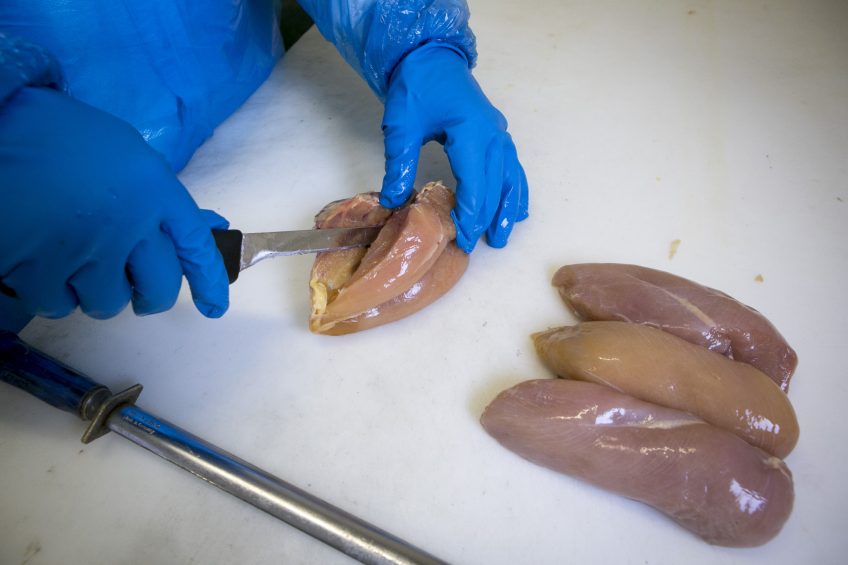White striping and woody breast myopathies

Myopathies have been gaining the attention of poultry meat producers globally since 2009. The two main myopathies are white striping and woody breast.
Poultry meat is highly preferred mainly due to its health benefits, convenience in cooking, and reasonable cost. In the US the per capita consumption of poultry meat in 2015 more than doubled compared to that of 1965. The increase in consumer demand has put pressure on producers to increase production while reducing the cost and time of production. Broilers are continuously selected to attain greater body weight at younger ages.
In 1925, the average market live weight of a 112 d broiler was 1.1 kg while in 2015, a market weight of 2.8 kg was achieved at 48 d. Over the last 10 years, the continuous selection for broilers has resulted in almost a 5% increase in breast meat yield, contributing to more than one-fifth of bird weight. Selection for enhanced growth may have caused inherent muscle fibre defects or growth-induced myopathy. Myopathies have been gaining the attention of poultry meat producers globally since 2009. The two main myopathies are white striping and woody breast. White striping is a condition characterised by the occurrence of white striations parallel to muscle fibres on breast, thigh, and tender muscles of broilers, while woody breast imparts tougher consistency to raw breast fillets. The two myopathies, show these defects in varying degrees, often together on the same fillet.
The severity of the myopathies adversely affects consumer acceptance of raw cut up parts and/or quality of further processed poultry meat products. The mechanism by which increased growth rates in modern broilers initiates myopathies is not yet known, it is very clear from various studies that heavier birds have higher incidence of severe myopaties. Histologically, both conditions have been characterised with myodegeneration and necrosis, fibrosis, lipidosis, and regenerative changes. Even though gross and/or histologic characteristics of modern myopathies are similar to some of the known conditions, such as hereditary muscular dystrophy, nutritional myopathy, toxic myopathies, and marbling; white striping and woody breast could have a different etiology.
As a result, there is a need for future studies to identify markers for white striping and woody breast in live birds and genetic, nutritional, and/or management strategies to alleviate the conditions. Moreover, feeding birds with high energy and protein diets, age, gender, feed restriction, and genetics have been associated with increased severity of white striping.
 Beheer
Beheer




 WP Admin
WP Admin  Bewerk bericht
Bewerk bericht